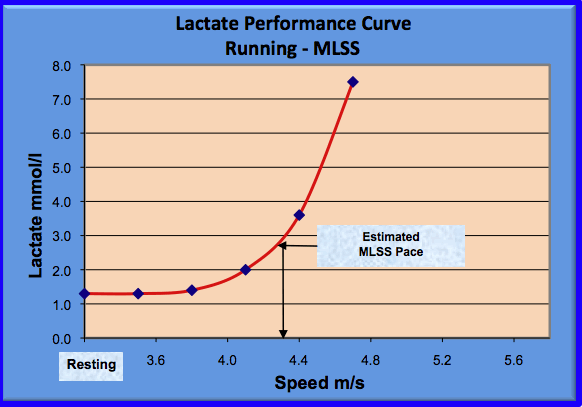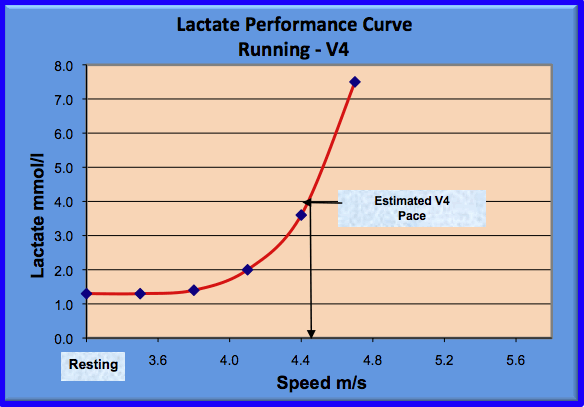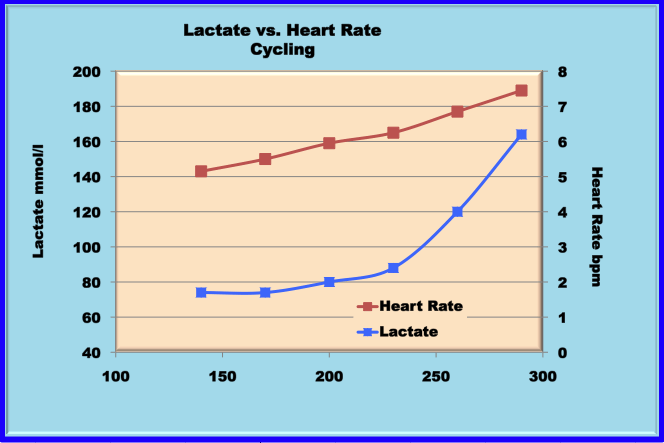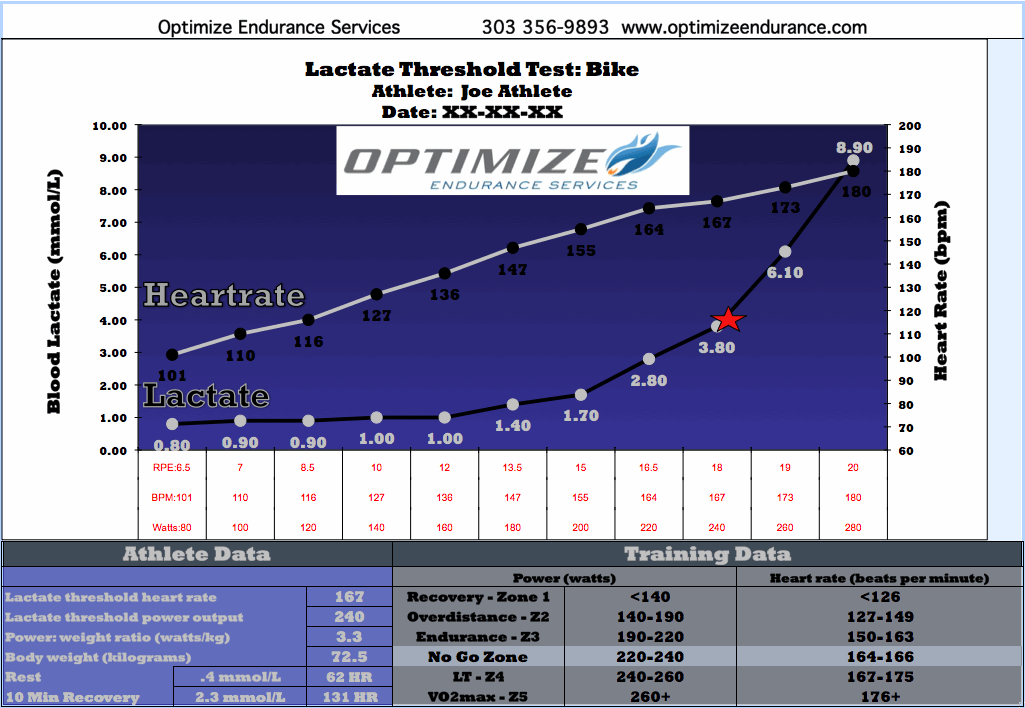Endurance Events and Lactate Testing
With Emphasis on the Triathlon
11 of 19
What is useful in lactate testing
It is best to stop here and reflect on a couple of basic things: just how the tests are done and what are the specific objectives of a lactate test. It will help to summarize and explain it again. This and the next two modules are an attempt to assess just what we have learned so far before we plunge into the underlying physiology of an optimal performance.
Some Basic Experiences
There are several ways to do a lactate test. The most common type of lactate test over the last 40 years is what is called a graded exercise test. This is common for testing VO2 max and many have adapted it for lactate testing, though the typical test to measure VO2 max is not good for measuring lactate – the stages are much too short for lactate to reach equilibrium. An athlete completes several stages of exercise, each stage slightly faster than the one before it. For running, the test is best done on a track. For swimming the test should be done in a pool. For cycling, the test is usually done on a trainer or ergometer, though some use a measured course.
Results of a typical test for running would look like the chart below. This chart represents a test where the athlete completes various 2000 m runs, first at a slow speed, and then gradually increases the speed till a certain lactate level is reached. It is possible to use a shorter distance such as 1600 m or even 1200 m for a recreational triathlete. Even shorter distances are not appropriate, because the lactate level does not have time to reach equilibrium.
At each speed a lactate reading is taken. Eventually the lactate reading reaches a level high enough so the athlete can stop. In many protocols, the runner stops after he reaches a lactate level above 4.0 mmol/l. In this example, after running at 4.7 m/s, the athlete does another stage, generating over 7 mmol/l of lactate, and then stops. Going faster than 4.0 does not tell the coach anything that cannot be done better with other tests.

The coach or athlete could attempt to estimate the MLSS (Maximum Lactate Steady State) using the data from the test above. The problem is that such an estimate is very subjective. It requires experience and also the estimate will vary according to the person doing the estimating. This estimate, if felt necessary, should be verified by a control test.
However, once the MLSS is determined, it is not recommended as a pace for use in training. That is why we suggest that such an approach is not necessary. Rather we prefer to measure the speed at 4 mmol/l of lactate. The rationale for this is discussed in detail in the Secrets of Lactate CD-ROM. Using the same chart, here is the measure of the V4 for this athlete.

We are completely aware that rarely will the 4 mmol/ level or V4 be the MLSS. The V4 is used because it correlates well with the MLSS and also with performance. It is also very easy to measure and not subjective.
It is often not necessary to do as many steps as were done in this test to measure the V4. For example, some of our swimming protocols use only one or two stages. And for running, only two tests are used for a recreational athlete. However, it is often helpful to do several tests to get the baseline for an athlete and to correlate heart rates with specific lactate levels (useful especially for cycling). A more complete protocol will also determine the level that an athlete generates at low effort levels. In the above example, the athlete is generating about 1.3 mmol/l at rest and at a low effort level.
Here is an example of combining lactate and heart rate for cycling training sessions.

Sometimes it is recommended that the athlete swim, run or cycle at a level that generates 1 mmol/l. For the athlete in the two charts above that will be impossible: the lowest level in this example is about 1.3 mmol/l for running and about 1.7 mmol/l for cycling. There are several analyzers for assessing lactate on the market and the numbers for the lowest levels may vary between analyzers. These analyzers are usually very comparable at 4 mmol/l but may vary more for low levels and resting levels of lactate.
Here is a chart developed by one of our customers, based on one of his athletes. It is a lactate and heart rate chart based on watts or power instead of speed. The chart was provided by Optimize Endurance near Denver. Here is an example of a portable lactate analyzer providing baseline information that is at the 1.0 mmol/l level.

Rob Lockey described this test as follows: a lactate threshold test consists of a graded exercise protocol to simulate increased workload on the individual. This test can be done easily on a bike or treadmill and generally is 30-45 minutes in length. This test should be completed at the end of a recovery period so that the overall training fatigue is low. The test itself can be considered part of the training. The appearance of lactate in blood is measured from a pinprick on the finger with an analyzer that gives a reading in mmol/L (millimoles per liter).
Those in the Denver area who are interested in learning more about Optimize Endurance's services, call Rob Lockey at 303-356-9893. Their website: is at www.optimizeendurance.com and his email is rob @ optimizeendurance.com. Rob Lockey, CSCS, ACSM/HFS, is a USA Cycling LII Certified Coach and provides testing and coaching through Optimize Endurance Services.
Continue on to Module 12 on the primary use for lactate testing, to assess performance over time
Module 12 of 19- The primary use for lactate testing is to assess performance over time
